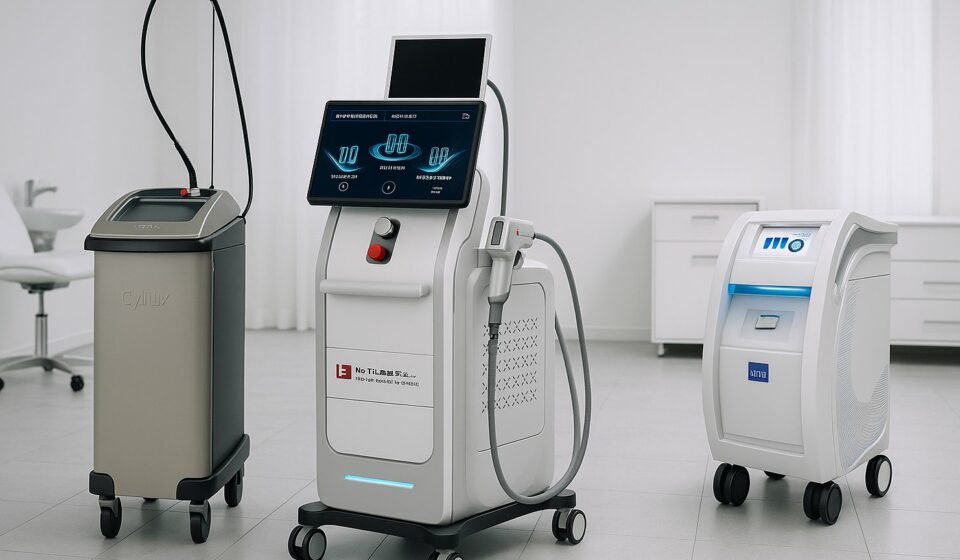Choosing the best laser hair removal machine for a clinic is rarely about a single headline spec. It is the combination of wavelengths, genuine comfort on the skin, practical speed, safety assurances, and the maths behind running costs. Get those pieces aligned for your client base and the rest follows naturally.
Table Of Content
- How clinics should compare devices before buying
- Why wavelength coverage and comfort decide outcomes
- Competitor comparison for clinics
- Nu TriLaze Plus
- Soprano Titanium
- Primelase HR
- Elite+
- Elysion Pro
- Quidion 3W
- Gentle Pro
- Quick reference: laser types and course length
- Common buying questions, answered
- Do we really need three wavelengths?
- Is a fourth wavelength useful?
- What repetition rate should we look for?
- Five step method to shortlist your machine
- Define your client mix
- Prioritise comfort and precision
- Model your total cost of ownership
- Verify approvals and training plan
- Test drive in a live demo
- Why British Institute of Lasers often fits best
- Closing insight
- Essential Reads
- Sources
This guide compares leading platforms used across UK clinics, explains which specifications actually change client outcomes, and shows where the British Institute of Lasers range fits for teams who want strong results without inflated upkeep. You will also find a quick shortlist method and answers to common buying questions to make the decision easier.
How clinics should compare devices before buying
Start with a clear view of your client mix, then focus on non negotiables. That way you avoid being distracted by features that do not influence day to day results.
Five must have criteria for most clinics:
- All skin tones covered: Access to 755 nm, 808 to 810 nm, and 1064 nm. This trio supports Fitzpatrick I to VI safely and effectively.
- Clever cooling: Reliable contact cooling so clients remain comfortable at higher fluences and session flow stays brisk.
- Low running costs: Avoid cryogen refills where possible. Check per shot costs, handpiece lifespan, and service intervals.
- Speed and precision: High repetition rates for large areas, plus interchangeable tips for face, nose, ears, and contours.
- Safety, training and approvals: FDA or medical CE evidence, a structured Core of KnowledgeA foundation module covering laser science, tissue interaction, risk management, and UK regulatory expectations.
View More Details course, and certification that insurers accept.
England is introducing licensing for non surgical cosmetic procedures, including laser hair removal. Align your policies and training with the government framework1, and consider appointing a Laser Protection Adviser to strengthen on site compliance.
Why wavelength coverage and comfort decide outcomes
The classic trio of 755 nm Alexandrite, 808 to 810 nm diode, and 1064 nm Nd:YAG has remained standard for a reason. It maps well to melanin absorption and penetration depth, giving clinics a safe path across light, medium, and dark skin tones. The science is grounded in selective photothermolysisA principle where specific wavelengths heat pigment targets like melanin while sparing surrounding tissue., and systematic reviews continue to support long standing safety and efficacy when devices are used correctly2.
Cooling is the clincher. Robust contact cooling reduces discomfort and allows fluence to sit where you need it. For operators, steady cooling means less time micro adjusting. For clients, sessions feel calmer which helps adherence across the full course. Diode platforms also hold a substantial portion of the UK market, signalling clinic confidence in this balance of speed, comfort, and clearance rates3.
Below you will find a simple visual that recaps how 755 nm, 810 nm, and 1064 nm relate to skin response and hair depth. It is part of our training pack for practitioners.
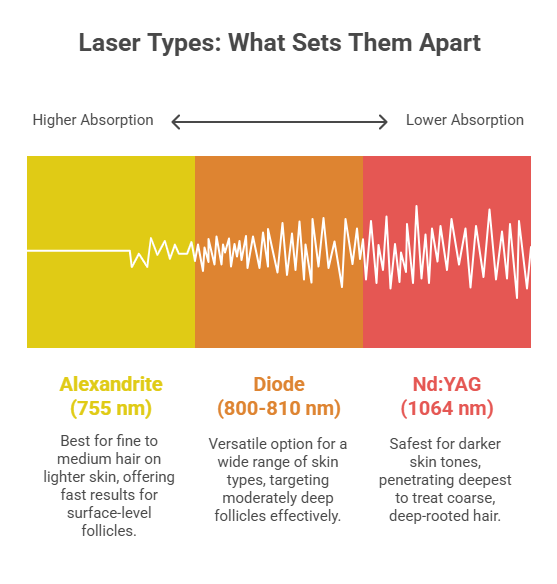
Competitor comparison for clinics
The cards below summarise strengths, limitations, and real world cost considerations for popular systems in UK practices.
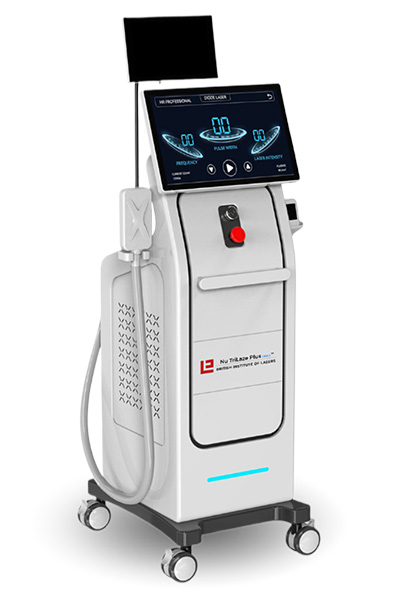
Nu TriLaze Plus
- Covers Fitzpatrick I to VI with 755, 808, and 1064 nm
- Integrated skin analyser with HD detection for personalisation
- Interchangeable tips for small and curved areas
- Fast workflows using intuitive handpiece controls
- Very low running costs, around 1p per 100 shots
- FDA approved and simple maintenance routines
- Free training, certification, and a 72 hour swap guarantee
- Three wavelengths rather than four, though clinical gains from a fourth are marginal
- Focused on hair removal rather than wider dermatology indications
- Staff should complete the included training to unlock full precision benefits
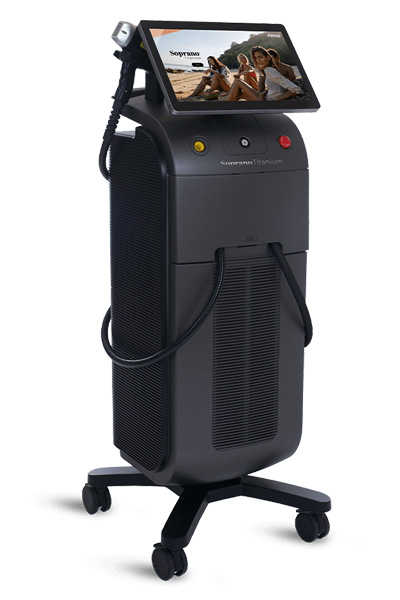
Soprano Titanium
- Triple wavelength in one applicator
- In motion delivery marketed as very comfortable
- Large Trio Max spot and specialist tips
- Cloud analytics for ROI tracking
- Lower power class can mean more sessions to reach clearance
- Bulky console and premium service contracts
- Large applicator can be less precise on delicate areas
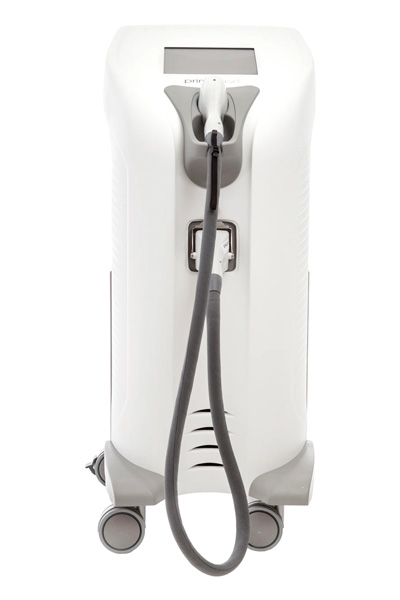
Primelase HR
- Extremely strong output for rapid coverage
- Four marketed wavelengths
- Hybrid design emphasises clinical stability
- Fourth wavelength adds limited practical gain for hair removal
- Heavier handpieces and no precision tips
- Premium servicing and parts pricing
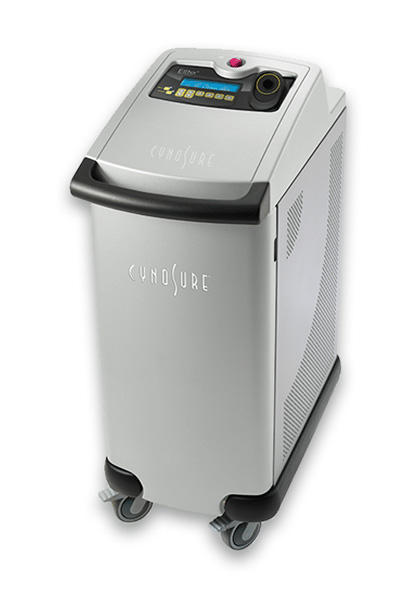
Elite+
- Trusted brand with strong clinical heritage
- Multiple indication approvals beyond hair removal
- Adjustable pulse widths and large spots
- No 810 nm diode, which is the workhorse for many clinics
- Requires external air cooling which adds cost and bulk
- Heavier servicing footprint vs modern diodes
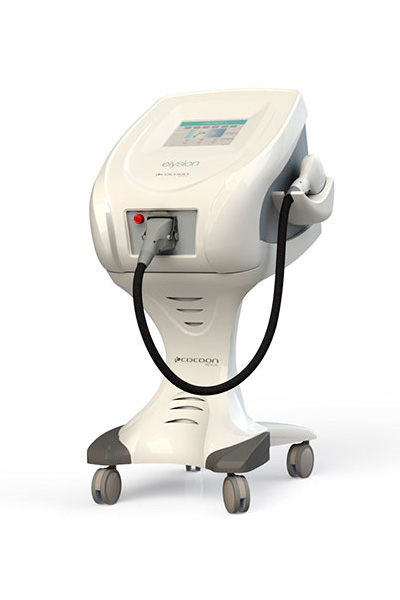
Elysion Pro
- Multiple wavelengths with high fluence options
- Short pulse support to chase residual fine hair
- Consumable free contact cooling
- Marginal clinical gains beyond the classic three wavelengths
- No precision tips and a bulkier footprint
- Lower brand recognition in some client groups
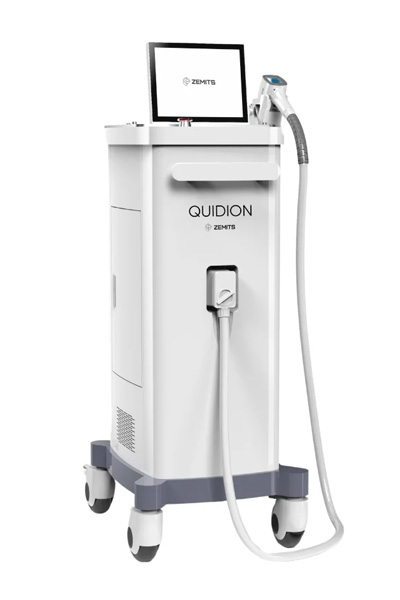
Quidion 3W
- Triple wavelength coverage with stable pulses
- Long emitter life and low apparent consumables
- Handpiece screen aids rapid setting changes
- Large, heavy console and no precision tips
- Fewer peer reviewed studies and lower brand recognition
- Regulatory scope for non hair uses needs careful checking
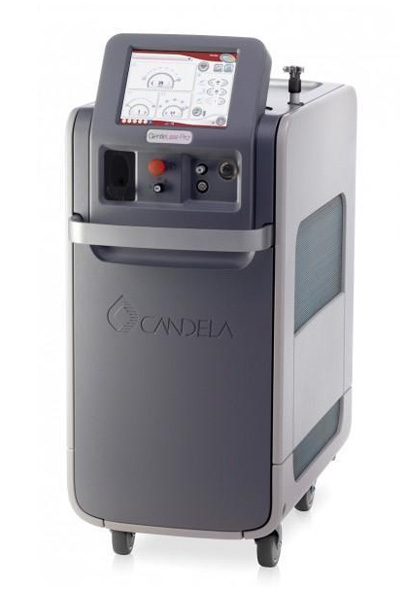
Gentle Pro
- Global brand trust and multi indication approvals
- Very large spot sizes and short pulses
- Cryogen cooling offers strong epidermal protection
- Lacks the 810 nm diode gold standard for hair removal
- High running costs due to cryogen refills
- Bulky console and premium service contracts
Quick reference: laser types and course length
The snapshot below helps you set expectations with clients during consultations.
| Technology | Client Comfort | Typical Sessions |
|---|---|---|
| Alexandrite 755 nm | Moderate, crisp feel | Eight to twelve |
| Diode 808 to 810 nm | High, contact cooled | Eight to twelve |
| Nd:YAG 1064 nm | High on darker skin types | Nine to twelve |
Common buying questions, answered
Short, practical responses your team can put to use immediately.
For most professional clinics, yes. 755 nm, 808 to 810 nm, and 1064 nm support Fitzpatrick I to VI. This prevents awkward compromises or turning clients away, particularly for darker skin tones where Nd:YAG 1064 nm is the safer choice.
It is mainly a marketing differentiator for hair removal. The classic three already match melanin response and depth well. Focus on cooling quality, fluenceEnergy delivered per area, measured in J per cm², which needs to be balanced with pulse width and cooling for comfort., and precision tips which affect outcomes directly.
Anything up to 10 HzPulses per second, which influences coverage speed on large areas. Faster rates do not help if fluence and cooling are sub optimal. is plenty for most clinics. More important is stability of output, spot size options, and how the handpiece feels after a full day of treatments.
Five step method to shortlist your machine
Use this approach to reach a confident decision within a week.
Define your client mix
List your top treatment areas, Fitzpatrick distribution, and appointment durations. This quickly sets your needs for speed and wavelengths.
Prioritise comfort and precision
Confirm high quality contact cooling, then check for interchangeable tips for face, nose, ears, and bikini contours. These two factors shape the client experience more than headline power figures.
Model your total cost of ownership
Calculate per treatment cost over three years including consumables, servicing, and handpiece life. Machines like Nu TriLaze Plus and Nu eRays Plus keep this figure very low, which supports healthier pricing flexibility.
Verify approvals and training plan
Choose FDA or medical CE systems and secure Core of Knowledge training. Our courses include machine maintenance, cleaning, and practical operation, followed by certification for insurance and council compliance.
Test drive in a live demo
Evaluate interface logic, cooling feel, and spot size transitions with a model. Book easily via Book a Demo or request a remote walk through.
Why British Institute of Lasers often fits best
Our three hair removal platforms pair strong clinical capability with practical ownership economics. Nu TriLaze Plus combines 755 nm, 808 nm, 1064 nm with an integrated skin analyser and interchangeable tips for precise work. Nu TriLaze Lite brings the same triple wavelength coverage in a compact form that travels neatly between rooms. Nu eRays Plus streamlines control via the handpiece, keeping pulse delivery fast, steady, and comfortable. All include free training and lifetime guidance, plus the 72 hour swap guarantee to minimise downtime.
If you prefer an at a glance overview of the core steps your team will follow on day one, the checklist below might help. It is the same onboarding flow we use during training at our Coventry premises and in on site sessions where appropriate.
- Confirm Fitzpatrick type and hair calibre via analyser.
- Patch test and record response at 24 and 48 hours.
- Set parameters using presets, then fine tune for comfort.
- Use precision tips for lips, nose, ears, and tight contours.
- Schedule the full course and explain spacing clearly.
The short clip below shows the interchangeable tips in action. It is a helpful preview for technicians who regularly treat facial zones and tight contours where control matters more than raw speed.
If you want a deeper dive on client comfort and pain management, our piece on how painful laser hair removal is covers cooling strategies and language to set honest expectations. For broader planning, explore machine cost modelling and our 2025 clinic marketing guide which includes simple pricing ladders and campaign ideas.
Closing insight
Pick a platform that treats every skin tone well, keeps clients comfortable, and makes financial sense per appointment. In real clinic life, that tends to be a triple wavelength diode system with strong contact cooling, precision tips, and dependable training.
British Institute of Lasers pairs those pieces with UK based support and a 72 hour swap guarantee, so your diary stays intact and clients keep momentum through their course.
Dr Majid Zarandouz
Majid holds a PhD in organic chemistry and has been working with laser systems for decades. His career began in the mid-1990s, when he started researching and developing laser-based technologies for medical and cosmetic applications. Over the years, he has combined scientific expertise with practical engineering to design machines that are effective, durable, and straightforward to use in real clinic settings. As director of the British Institute of Lasers, Majid continues to focus on producing equipment that meets professional standards while remaining accessible to businesses of all sizes.

